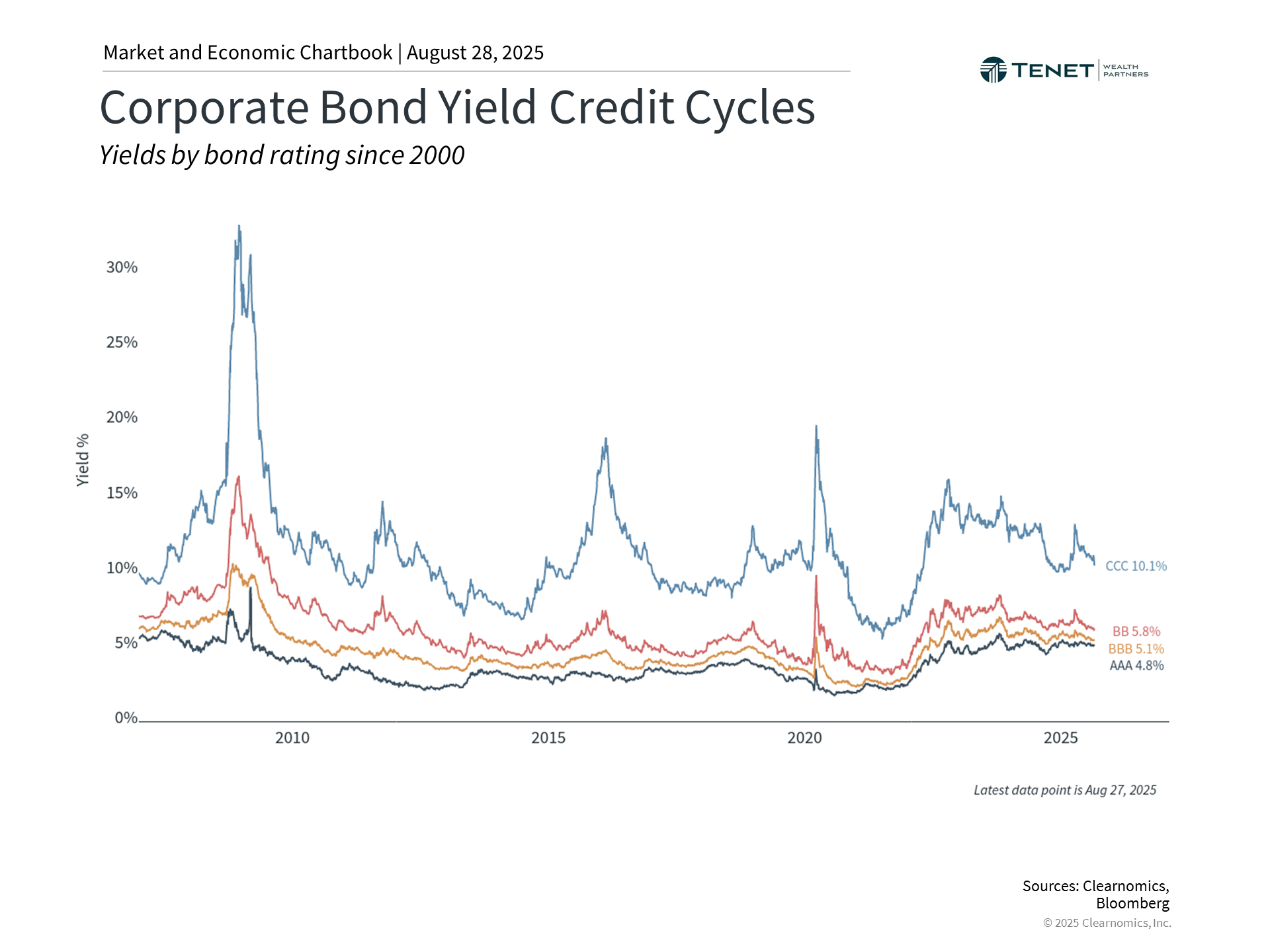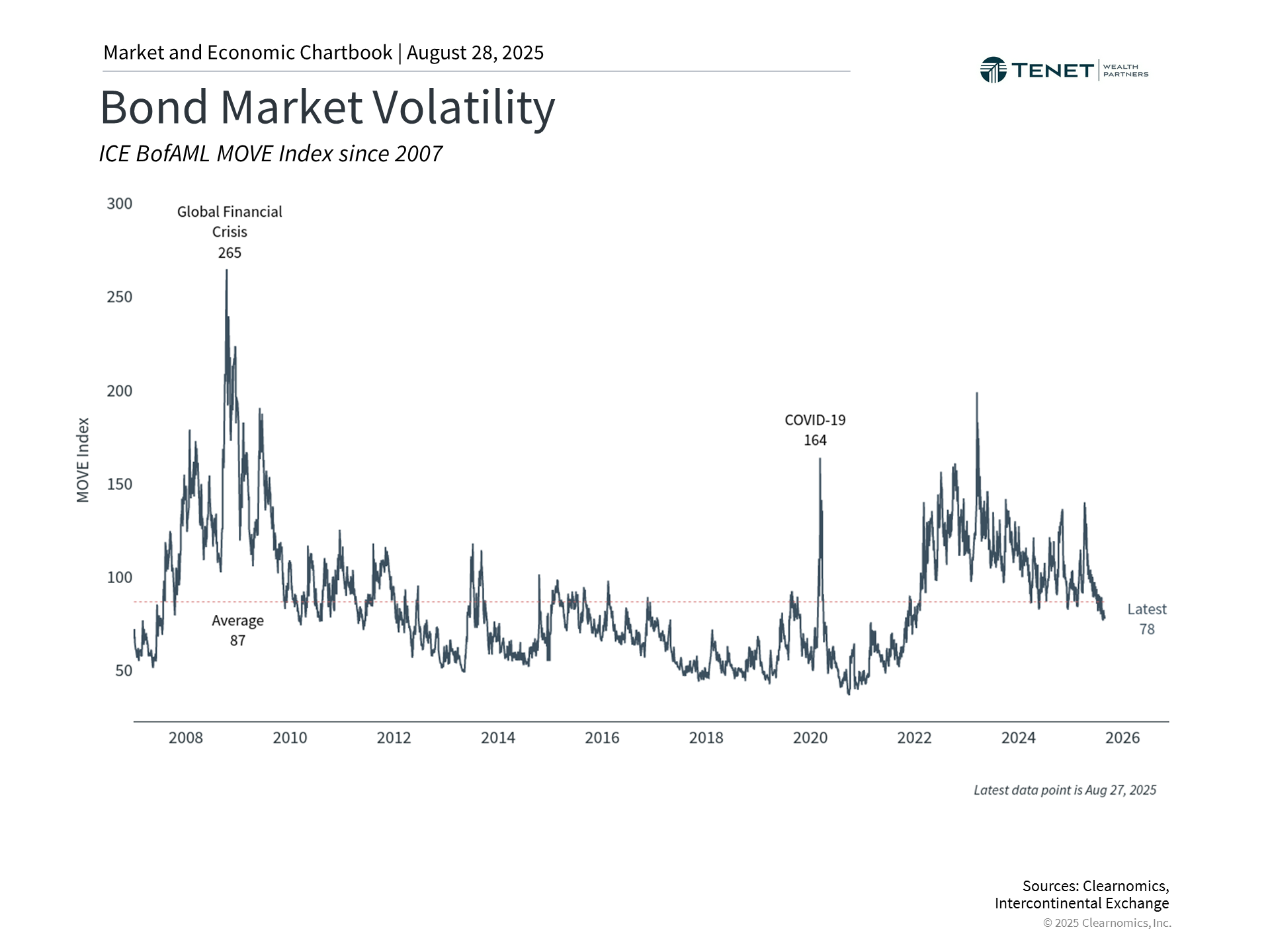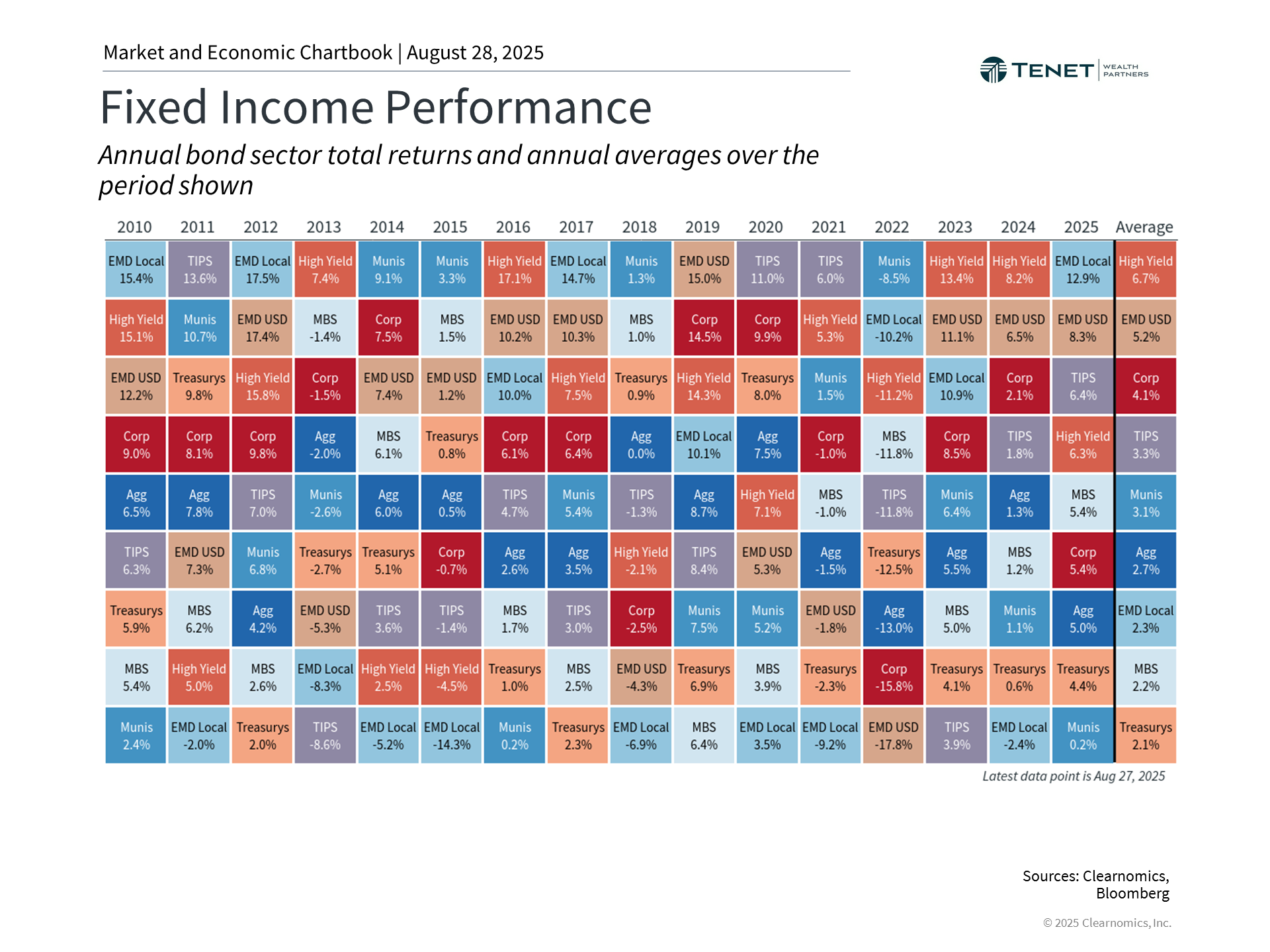Recent remarks from Fed Chair Jerome Powell at the annual Jackson Hole conference have garnered significant media attention, with Powell strongly suggesting that a September interest rate reduction is probable. Powell highlighted the need to balance concerns about tariffs and inflation against the imperative to support employment markets. With markets trading near record levels, investors appear aligned with the Fed’s policy direction and maintain economic confidence. For long-term investors, what implications does a potential rate reduction hold given current market conditions?
The importance of Fed credibility for market stability
 |
The connection between Federal Reserve credibility and market trust is frequently underestimated, yet it remains fundamental to monetary policy effectiveness. Financial markets function as an important “validation mechanism” for central bank decisions. Although the Fed controls short-term rates, market forces determine longer-term interest rates that impact mortgage costs and corporate financing. This dynamic means monetary policy succeeds only when investors trust the Fed’s capacity to meet objectives through rate adjustments and forward guidance.
The 1970s exemplify a period when diminished Fed confidence pushed rates higher. As the Fed lost credibility by permitting price increases to accelerate, bond investors in the market essentially raised interest rates independently by demanding elevated yields to compensate for inflation risks. Conversely, the post-2008 era showed how Fed credibility maintained stable long-term inflation expectations. Even when the Fed appeared delayed in responding to post-pandemic inflation, their aggressive rate increases and decisive communication helped restore inflation expectations.
Corporate bond yields provide one method to gauge confidence in both the Fed and broader economy. These yields reflect the compensation investors demand for lending to businesses based on perceived risk. Yields typically decline when economic conditions are robust and corporate earnings are expanding, while increasing during periods of financial and economic uncertainty. Corporate credit spreads similarly indicate how much additional yield investors require beyond safer government securities.
Current market conditions indicate this confidence remains robust. Corporate bond markets provide some of the clearest evidence of market confidence, with credit yields and spreads reaching multi-year lows, as demonstrated in the accompanying chart above. High-yield spreads have also contracted, showing investors’ comfort with corporate credit exposure. This aligns with major equity indices achieving fresh record highs reflecting investor optimism.
Fed communications point toward rate reductions
 |
Powell’s Jackson Hole remarks recognized the careful equilibrium the Fed must maintain between inflation control and employment support. While the Fed chair observed that “risks to inflation are tilted to the upside” given tariff effects, he also stressed “significant risks to employment to the downside.” This balanced approach reflects the Fed’s dual mandate of promoting price stability and full employment.
Current economic indicators highlight this balancing act. The Fed’s favored inflation gauge, the Personal Consumption Expenditures Price Index, has increased 2.6% annually, while core PCE rose 2.8%. These figures exceed the Fed’s 2% objective, and combined with the Consumer Price Index and Producer Price Index, indicate businesses are starting to transfer higher costs to customers.
Meanwhile, employment statistics have demonstrated surprising weakness. July’s employment report showed only 73,000 new jobs created, significantly below historical averages and economist projections. Downward adjustments to prior months indicated greater labor market cooling than previously recognized. Unemployment has held steady between 4.0% and 4.2%, though this stability partially reflects decreased labor force participation and immigration policy changes affecting labor availability.
The Fed faces the challenge of assessing whether tariff-driven price increases represent temporary adjustments or indicate intensifying inflationary pressures. Currently, the Fed appears prepared for measured rate reductions.
Declining rates present bond market opportunities
 |
Expected Fed rate cuts carry significant implications for all market participants. Historically, declining policy rates support bond valuations, as existing securities with higher coupons become more attractive. AS a result, bond values increase which enhances price performance of existing bonds. Additionally, shifting rates and market fluctuations have supported diversified fixed-income positions. These dynamics have contributed to the U.S. Aggregate Bond Index delivering a nearly 5% total return year-to-date.
Regardless of long-term rate movements, current bond yields remain compelling. Treasury securities currently average 4.0% yields, investment grade corporate bonds offer 4.9%, and high yield securities provide 6.9%. These income-generating yields remain substantially above post-2008 average levels for portfolio investors.
For equity investors, reduced rates typically lower corporate borrowing expenses, potentially accelerating growth. This environment can justify higher valuations since future cash flows carry greater present value when discount rates decline. Recent market peaks suggest investors are already positioning for this favorable backdrop.
However, when credit spreads are narrow and market valuations are elevated, maintaining discipline becomes crucial. Compressed spreads may limit corporate bond upside potential and create vulnerability if conditions worsen. Similarly, high valuations can indicate reduced long-term return expectations.
This doesn’t suggest completely avoiding equities or bonds, or attempting market timing, but rather emphasizes maintaining proper asset allocation to manage these risks. A thoughtfully constructed portfolio can capitalize on stable economic conditions and anticipated rate cuts while preserving protection against unforeseen developments.

The bottom line? Strong market confidence in Fed policy trajectory, coupled with solid corporate fundamentals, presents opportunities for long-term investors. Maintaining appropriate portfolio construction remains the optimal approach for managing long-term risks and returns.
Registered Representative of Sanctuary Securities Inc. and Investment Advisor Representative of Sanctuary Advisors, LLC. Securities offered through Sanctuary Securities, Inc., Member FINRA, SIPC. Advisory services offered through Sanctuary Advisors, LLC., a SEC Registered Investment Advisor. Tenet Wealth Partners is a DBA of Sanctuary Securities, Inc. and Sanctuary Advisors, LLC.
The information provided in this communication was sourced by Tenet Wealth Partners through public information and public channels and is in no way proprietary to Tenet Wealth Partners, nor is the information provided Tenet Wealth Partner’s position, recommendation or investment advice.
This material is provided for informational/educational purposes only. This material is not intended to constitute legal, tax, investment or financial advice. Investments are subject to risk, including but not limited to market and interest rate fluctuations.
Any performance data represents past performance which is no guarantee of future results. Prices/yields/figures mentioned herein are as of the date noted unless indicated otherwise. All figures subject to market fluctuation and change. Additional information available upon request.
Copyright (c) 2025 Clearnomics, Inc. All rights reserved. The information contained herein has been obtained from sources believed to be reliable, but is not necessarily complete and its accuracy cannot be guaranteed. No representation or warranty, express or implied, is made as to the fairness, accuracy, completeness, or correctness of the information and opinions contained herein. The views and the other information provided are subject to change without notice. All reports posted on or via www.clearnomics.com or any affiliated websites, applications, or services are issued without regard to the specific investment objectives, financial situation, or particular needs of any specific recipient and are not to be construed as a solicitation or an offer to buy or sell any securities or related financial instruments. Past performance is not necessarily a guide to future results. Company fundamentals and earnings may be mentioned occasionally, but should not be construed as a recommendation to buy, sell, or hold the company’s stock. Predictions, forecasts, and estimates for any and all markets should not be construed as recommendations to buy, sell, or hold any security–including mutual funds, futures contracts, and exchange traded funds, or any similar instruments. The text, images, and other materials contained or displayed in this report are proprietary to Clearnomics, Inc. and constitute valuable intellectual property. All unauthorized reproduction or other use of material from Clearnomics, Inc. shall be deemed willful infringement(s) of this copyright and other proprietary and intellectual property rights, including but not limited to, rights of privacy. Clearnomics, Inc. expressly reserves all rights in connection with its intellectual property, including without limitation the right to block the transfer of its products and services and/or to track usage thereof, through electronic tracking technology, and all other lawful means, now known or hereafter devised. Clearnomics, Inc. reserves the right, without further notice, to pursue to the fullest extent allowed by the law any and all criminal and civil remedies for the violation of its rights.

